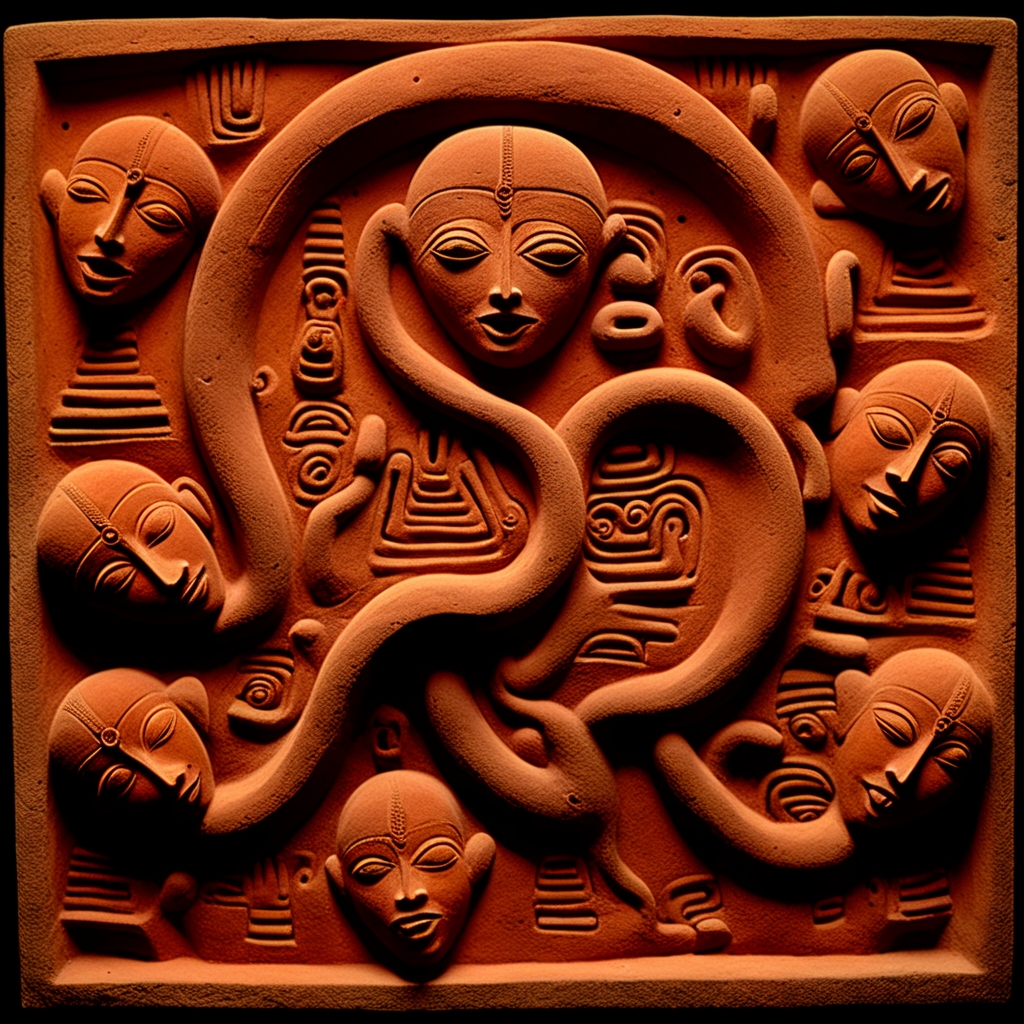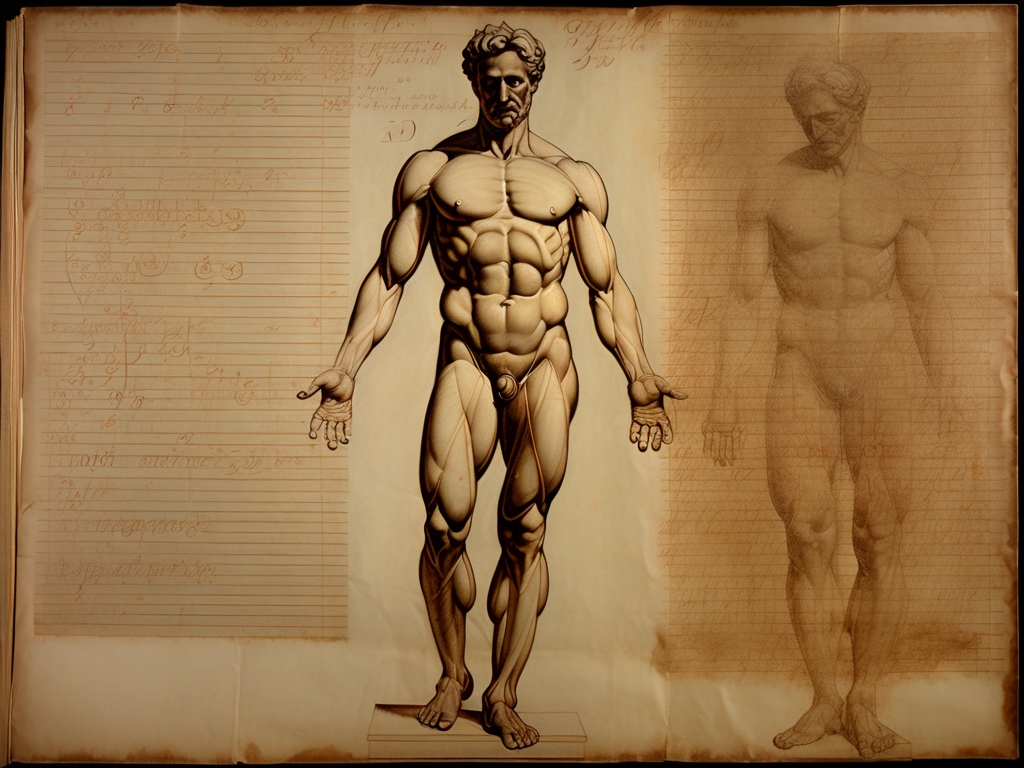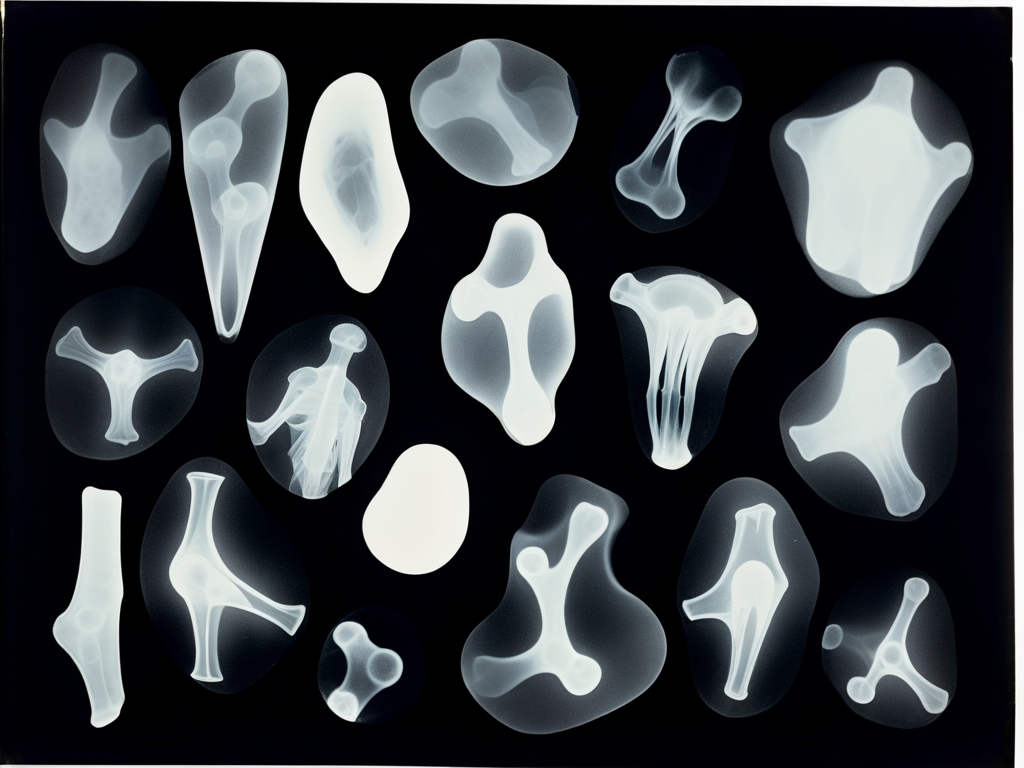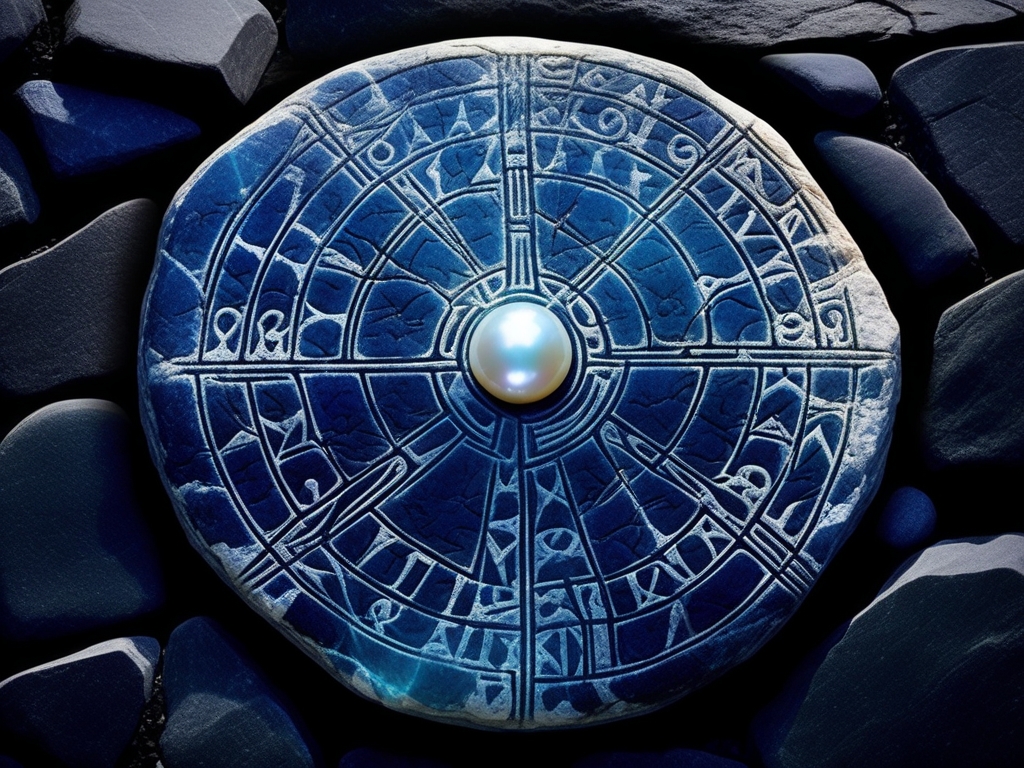The Kharavela Coils

Nestled deep within Ravensfield’s eastern galleries, the terracotta relief emerges as a spectral vision wrought in clay—a fevered dream caught between form and shadow. Its sinuous contours slither across the weathered surface, weaving stylized human visages bound by curling serpentine tendrils that twist with unsettling grace. Awash in ochre patina beneath the gallery lights, intricate narrative panels spiral inward like cosmic coils converging on a central void.
This enigmatic Indian sculpture defies easy classification. The mastery of its relief technique far surpasses what one might expect from its purported era, while the iconography melds familiar devotional heads with cryptic symbols hinting at something far older—perhaps primordial forces lurking beyond human myth. Scholars remain divided: do these serpentine shapes evoke nagas, or entities older still; beings that predate time’s own memory?
"The coils map neural pathways to realms that predate human consciousness." Dr. Evelyn Ashworth, Xenoarchaeologist
In 1987, paranormal researcher Dr. Kamala Vaidyanathan unearthed this artifact amid pre-Mauryan ruins near Bhubaneswar. Having long forsaken orthodox archaeology for things science dared not name, her recovered notebooks describe it not merely as art, but “a transmission device cloaked in divinity.”
Those on her excavation reported dreams haunted by coiled shapes whispering frequencies beneath human hearing; echoes mirrored in the relief’s winding forms linking serene faces with fluid curves that seemed alive under their fingertips. The panel itself hummed with internal warmth even as the earth around remained cold—local villagers recoiled from the site after just days.
Vaidyanathan’s journals reveal a descent into obsession: she interpreted the spiraling motifs as layered instructions—a manual for communion with “the Sleepers Beneath.” Her weeks spent transcribing this alien script convinced her she had uncovered a hidden genesis encrypted within these twisting coils and visages.
During monsoon nights she performed rituals beneath rain-darkened skies. She wrote of attaining “neural contact with the Primordial Architects”—ancient intelligences who shaped life according to celestial blueprints etched here in intertwined faces and serpent forms.
Her final logs grow frantic—“the Awakening Protocol” lay hidden deep within labyrinthine loops harboring coordinates to buried chambers where age-old beings waited in endless slumber. Her last lucid phrase declared an act of opening “the door that should never open.”
Authorities found her three days later—inert beside the pit where history blurred into nightmare—her hair turned pure white overnight yet no wound marked her body. She lingered half-alive for six months, whispering cryptic sequences of numbers unfathomable to any known science before slipping quietly away.
The terracotta relief entered Ravensfield through Dr. Cornelius Blackthorne’s estate after acquiring it at government auction in the wake of Vaidyanathan’s disappearance. His notes speak of “unprecedented psychometric surges” and subtle temporal distortions emanating from its earthen folds.
Visitors long exposed to those tangled faces and undulating coils report creeping unease; some hear faint chants drifting from nowhere yet everywhere—ancient tongues carried on invisible winds arising from cracked clay surfaces themselves. Museum cameras sometimes capture ghostly luminescence dancing amidst shadows after dark—phenomena left officially unexplained but whispered among keepers like secrets best left forgotten.




